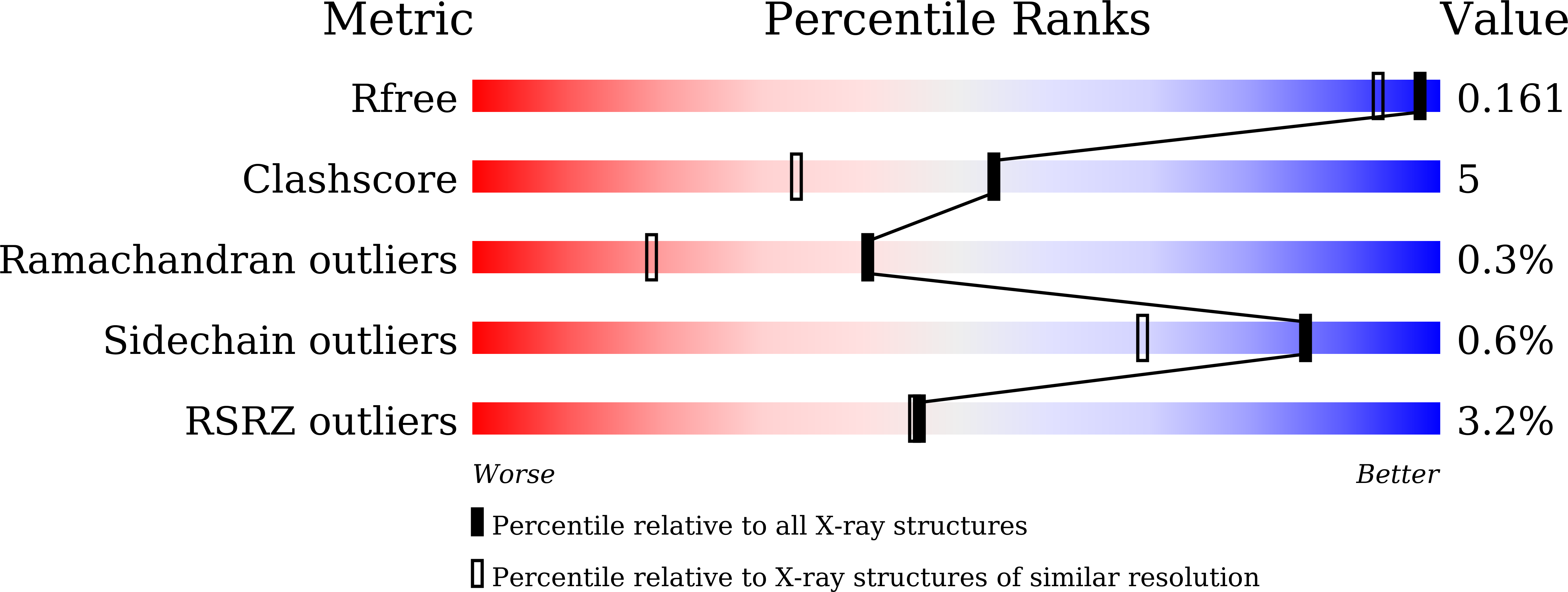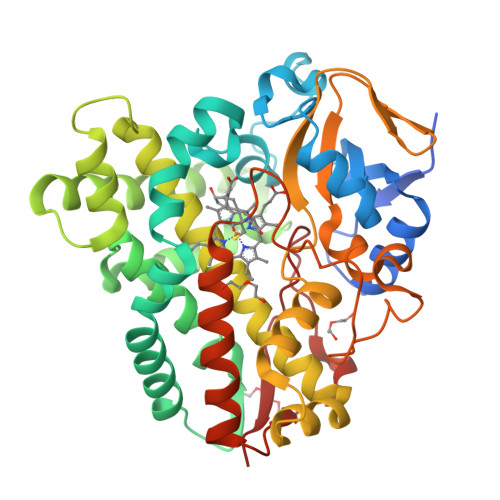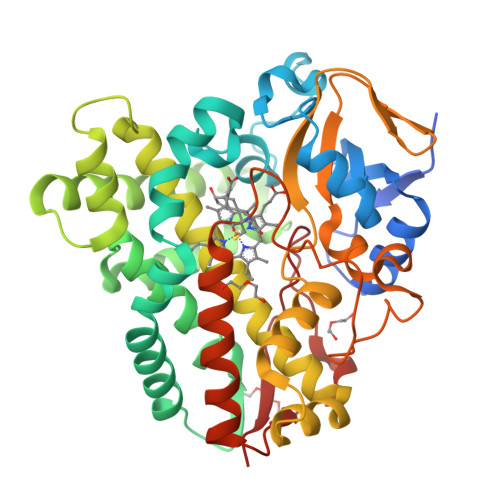Improved 2 alpha-Hydroxylation Efficiency of Steroids by CYP154C2 Using Structure-Guided Rational Design.
Gao, Q., Ma, B., Wang, Q., Zhang, H., Fushinobu, S., Yang, J., Lin, S., Sun, K., Han, B.N., Xu, L.H.(2023) Appl Environ Microbiol 89: e0218622-e0218622
- PubMed: 36847541
- DOI: https://doi.org/10.1128/aem.02186-22
- Primary Citation of Related Structures:
7CL8 - PubMed Abstract:
Cytochrome P450 enzymes are promising biocatalysts for industrial use because they catalyze site-selective C-H oxidation and have diverse catalytic reactions and a broad substrate range. In this study, the 2α-hydroxylation activity of CYP154C2 from Streptomyces avermitilis MA-4680T toward androstenedione (ASD) was identified by an in vitro conversion assay. The testosterone (TES)-bound structure of CYP154C2 was solved at 1.42 Å, and this structure was used to design eight mutants, including single, double, and triple mutants, to improve the conversion efficiency. Mutants L88F/M191F and M191F/V285L were found to enhance the conversion rates significantly (i.e., 8.9-fold and 7.4-fold for TES, 46.5-fold and 19.5-fold for ASD, respectively) compared with the wild-type (WT) enzyme while retaining high 2α-position selectivity. The substrate binding affinity of the L88F/M191F mutant toward TES and ASD was enhanced compared with that of WT CYP154C2, supporting the measured increase in the conversion efficiencies. Moreover, the total turnover number and k cat / K m of the L88F/M191F and M191F/V285L mutants increased significantly. Interestingly, all mutants containing L88F generated 16α-hydroxylation products, suggesting that L88 in CYP154C2 plays a vital role in substrate selectivity and that the amino acid corresponding to L88 in the 154C subfamily affects the orientation of steroid binding and substrate selectivity. IMPORTANCE Hydroxylated derivatives of steroids play essential roles in medicine. Cytochrome P450 enzymes selectively hydroxylate methyne groups on steroids, which can dramatically change their polarity, biological activity and toxicity. There is a paucity of reports on the 2α-hydroxylation of steroids, and documented 2α-hydroxylate P450s show extremely low conversion efficiency and/or low regio- and stereoselectivity. This study conducted crystal structure analysis and structure-guided rational engineering of CYP154C2 and efficiently enhanced the conversion efficiency of TES and ASD with high regio- and stereoselectivity. Our results provide an effective strategy and theoretical basis for the 2α-hydroxylation of steroids, and the structure-guided rational design of P450s should facilitate P450 applications in the biosynthesis of steroid drugs.
Organizational Affiliation:
College of Life Sciences and Medicine, Zhejiang Sci-Tech University, Hangzhou, China.






















